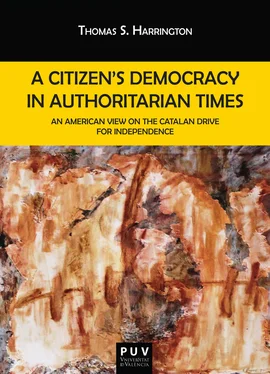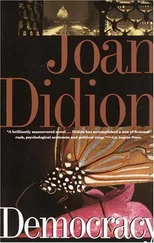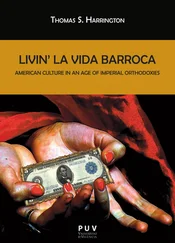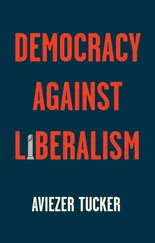For those on the periphery, the centralist intolerance under Primo and Berenguer merely proved what they had always feared, and what a close reading of the contemporary history Iberian discourse of national identity makes crystal clear: Castilianists perennially reserve for themselves the prerogative to use institutionalized violence when they feel that their hegemony is called into question by one or more of their peninsular others. And as the numerous civil conflicts of the 19th century indicate, the generally tendency had been to maintain the pressure on the so-called “periphery” until such time as the “threat” is deemed to be extinguished, or to put it in culturalist terms, until such time as the centralist repertoire of signs and symbols successfully displaces those repertoires generated by groups on the periphery. However, the sudden flight of Alfonso XIII in April 1931, unexpectedly truncated this exercise in “forced forgetting.” But the short length of the dictatorship was not the only problem. Throughout his years in control, Primo had consistently harassed and denigrated the Madrid-based intellectual class. They had responded denying the regime their valued services in the realm of culture planning. Thus the dictator found himself in the awkward role of having nothing much to offer the periphery (in terms of compelling myths of collective identity) in exchange for their forced abandonment of cherished autonomous institutions.
With the declaration of the Republic, situation became cruelly reversed. As we have seen, the latent threat of violence, or at the very least, the right to invoke some supernatural prerogative in relations with peninsular “others,” had always formed part of even the most progressive versions of the Castilianist discourse of identity. Now, thanks to their acrimonious “divorce” from Primo and the power structure he represented, the liberal intellectuals of Madrid who had charged themselves with the duty of creating a new framework for intra-peninsular cohesion, no longer had had that vaunted tool at their disposal. In effect, they were in the difficult position of having to quickly and radically re-invent a centuries-old discursive model along completely non-coercive lines. Their failure to do so effectively is not surprising. Owing to this reality, the center was now at the mercy of the now more cohesive culture-planning models of the periphery. That Catalonia remained part of the Spanish state in the spring of 1931, for example, has much to do with Macià’s sense of calculated restraint than the inherent powers of the center. When the Córtes finally did grant the re-established Generalitat a Statue of Autonomy in 1932 (stripped of the peninsula-wide federalizing provisions with which it had originally been proposed), it was approved over the objections of Castilianist intellectual lions such as Unamuno and Ortega. The narrowness of the “enlightened” Castilianist vision can be seen further in the Azaña government’s harshly negative reaction to the Galeuzca pact of August 1933, in which leaders of all of the major Catalan, Basque and Galician nationalist parties agreed to cooperate in promoting the regular exchange of cultural artifacts between the three nations. Far from seeing this as a new and credible way to perhaps begin reshaping the nation from the periphery, the “liberal” Republican government attacked it stridently in the press.
In many ways, the pact was the high point of attempts to fundamentally reconfigure the parameters of the Spanish repertoire of cultural options. It was also the beginning of the end of the tradition of pseudo-cosmopolitan Castilianism begun by Cánovas and practiced through the Primo de Rivera dictatorship. In November of 1933, coalition formed around Gil Robles’ CEDA movement assumed power. This change, in turn, encouraged the re-emergence of the type and reactionary and frankly anti-modern Castilianism practiced intermittently in the early 1800s, and more assiduously still, in the sixteenth and seventeenth centuries. In the eyes of military leaders and most of the Catholic right, the mere existence, however tenuous, of composite visions of national identity such as those that were uneasily tolerated by the Republican center-left, proved that the liberal political class had lost whatever bona fides it might have had in its sacred role as guarantors of national cohesion. Though both Basque and Galician statutes of autonomy were proposed (with the Galician one actually gaining a preliminary plebiscitary approval at home) during the pre-war Popular Front government, it was already clear to most that the moment to peacefully implement a radical re-alignment of the relations between Spain’s major culture-nations had already come and gone.
As has been widely demonstrated, the Francoist culture-planning efforts were rooted, from quite early onward, in a frank revival of Spain’s pre-modern repertoire of nationalist signs and symbols. Like the of arrows held tightly in the talon of the Falangist eagle, causes of the Army, Church and the Castilian language were re-bundled and proffered as a cultural package that would enable a new Imperial crusade like the one that had first expelled the infidel from the peninsula, and later made possible the “civilization” of the overseas territories. “Háblame en cristiano” the widely utilized insult/response used by Francoist troops with those using or known to favor the use of one of the non-Castilian languages, reveals quite succinctly the contours of its logic. When we consider the frequent insinuations concerning the “Jewishness” of the Catalans, and the habitual canards about the devious dealings of protestant Great Britain and Masonic cells, Fancoism’s Tridentine and even pre-Tridentine logic becomes more apparent. It was a desire to inculcate the population with this very particular Castilianist view of the peninsular past, that animated the production of the famous wave of historicist films produced by directors such as Juan de Orduña, Rafael Gil and Saenz de Heredia in the late 1940s and early 1950s.
As mentioned earlier, Cambó’s failure to gain a statute of autonomy in 1918-19, combined with rightist oppression of the Primo years, engendered a change of orientation in all of the peripheral discourses identity. There is a tendency, especially when we look at the Catalan case and Barcelona’s famously “red” comportment during the Civil War, to characterize these transformations in terms of a simple migration from the left to the right side of the political spectrum. While it is certainly true that the causes of nationhood, and egalitarianism came together in Catalonia, and to a lesser extent, Galicia, in the period 1931-1937, it would be a grave error to overstate the case. For all of their apparent ideological transformations in the public arena, the discursive architecture of the nationalist discourses of the Maciàs and Castelaos remained heavily indebted to the logic of historicism, with its emphasis on the pre-eminent role of language, place and the work of lettered élites in the creation of social cohesion. This, of course, served as a built-in brake on their long-term ability to adopt truly universal notions social justice. Moreover, with a few notable exceptions, the source of leadership in these now seemingly leftish movements of national identity was what it had always been: the comfortable urban upper-middle class which had a long record of cooperation with clerical authority. While these contradictions were either downplayed or papered over in Catalonia and Galicia during the Republic, the same could not be said of Euzkadi. There the strongly historicist and confessional cast of the PNV, caused it to clash repeatedly with its supposed republican “allies” within the country.
It is important to bear all this in mind when we look at the evolution of the major Iberian discourses of national identity over the last half-century. According to a vision that is still widely circulated today, the clash of national culture-planning projects during this period went something like this. From 1939 to the early 1950s, Franco utilized the cinematic, journalistic and literary resources at his disposal (not to mention those having to do with the employ of state violence) to expunge and/or simply overwhelm with religiously-imbued Castilianisms any remaining signs of Catalan, Basque and Galician identity. As he did so, the non-Castilian leaders and artistic producers kept the flame of their national cultures alive in exile. As good Republicans, these exiled patriots felt a strong affinity toward egalitarian politics and a generalized aversion toward confessionally-informed social thought. As the 1950s wore on, it became clear to the Franco regime that some entente with instrumental modernity was necessary. The first step in this process was the entry into the government of the so-called “technocrats” of Opus Dei. It was followed, in the early sixties, with country’s decision to make tourism one of the prime engines of its economic development. As a result of these changes, Spaniards born after 1940 began to fall increasingly into step with the dominant social democratic views of the European counterparts. As the regime’s ideological vehemence declined in the mid sixties, numerous exiles returned home. In dialogues with them, and with their new trans-pyrenaean interlocutors, the post war generation began re-connecting with their country’s “lost” history of progressive politics and cultural diversity. It was out of this ferment that recovery of the Catalan, Basque and Galician cultural systems arose during the 60s, 1970s and 1980s.
Читать дальше












